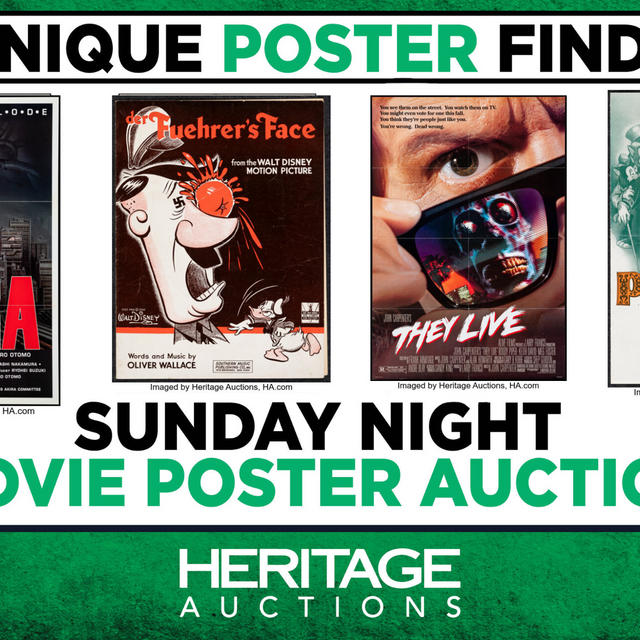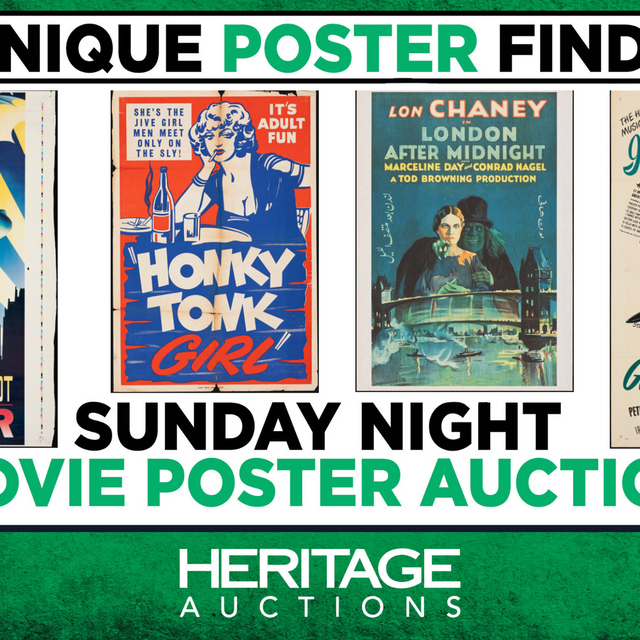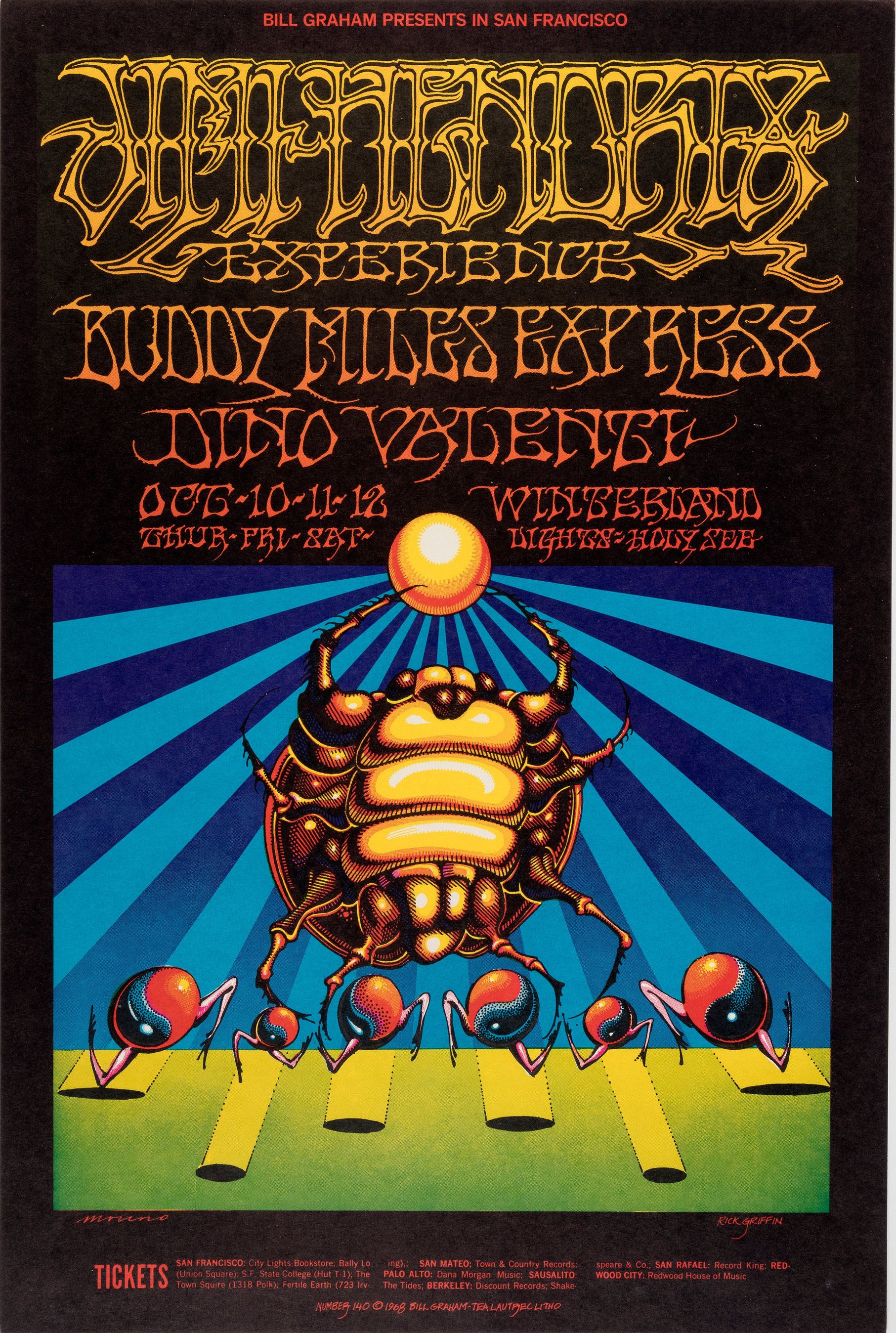
 Posters
Posters
The most commonly collected of the bunch, posters are the traditional form of street advertising for concerts. On the small end, posters are around 11" x 17" in size, while larger ones can be up to 24" x 36". Most of the early psychedelic posters, such as those from the Bill Graham and Family Dog series', were printed on vellum. Vellum is a soft paper that tears and stains easily. Later on, posters were printed on sturdier paper stock. Posters are commonly printed on a variety of stock types but tend to be the largest form of concert art.
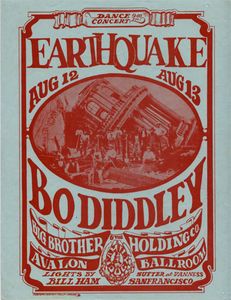 Handbills and Postcards
Handbills and Postcards
Handbills and postcards are the smallest versions of concert art. The terms are often used interchangeably, but there are distinct differences between the two. Experts tend to consider handbills to be anything smaller than 11" x 17" in size. They are almost always printed on much thinner paper than posters. Whereas posters are designed to be posted, handbills are designed to be handed out. Thus, it is less likely for the vintage variety to be found in good condition. Early handbills were printed on flimsy, thinner, paper than posters.
Postcards, alternatively, are designed so that they can be mailed. They are printed on thicker stock and most often do not exceed 5" x 7" in size. Many of the vintage, collectible postcards have a "place stamp here" marker on the reverse. Because of the thicker stock, they survive being handled a bit better than handbills.
Flyers 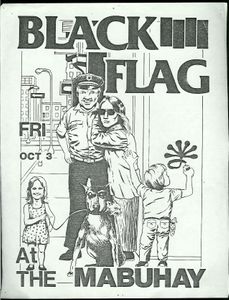
The term "flyer" in the world of rock art typically refers to the advertisements that came out of the punk and new wave era of the 1970s. Punk bands were all about DIY, both in music and their concert art. Flyers for their shows would be designed using copy machines and printed on 8.5" x 11" paper. Most of the time, these flyers were printed in black and white and contained wild, graphic imagery. Punk flyers were rarely designed by trained, professional artists as posters were, and were generally created by band members or friends of the band. They were designed specifically as street art and were stapled to telephone poles in large quantities. Thus, the survival rate of these posters is relatively low.
Flyers remain the main source of concert advertising today. Posters are more commonly sold as merch rather than used to advertise concerts, but flyers still appear on telephone poles around cities and neighborhoods. Though these modern advertisements may not be widely collected today, they remain an effective tool to bring crowds to shows.
Collecting Posters, Handbills, and Flyers
Many concert art collectors will have a variety of formats in their collections, and each format is valuable. For a longer, more in-depth exploration of concert poster formats, check out our concert poster 101 guide. If you want to take a look at the value of posters vs. handbills, check out our concert poster price guide! We're currently featuring the posters, handbills, and postcards designed for the Family Dog numbered series, and will be adding more collections soon!
